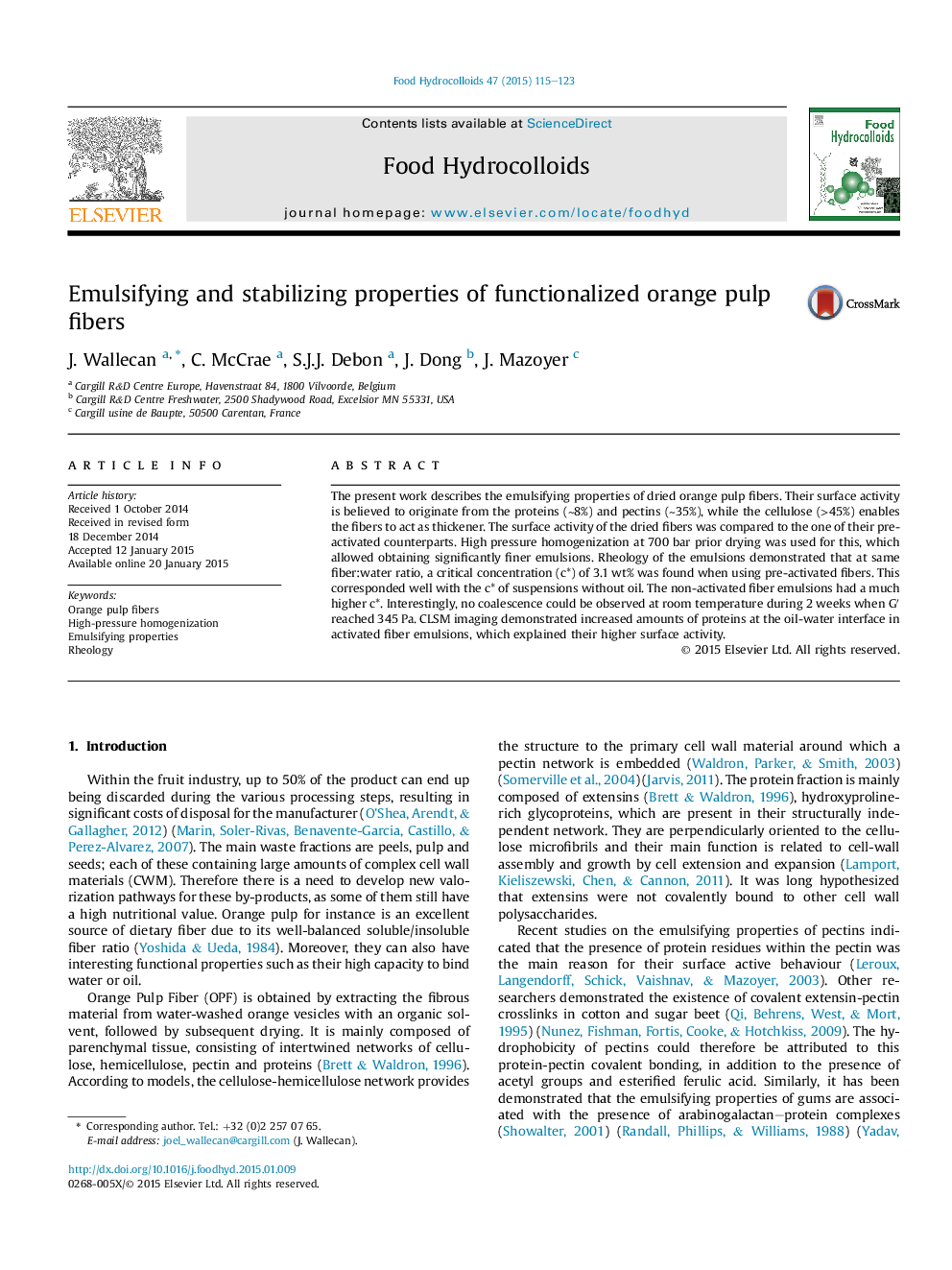| Article ID | Journal | Published Year | Pages | File Type |
|---|---|---|---|---|
| 604413 | Food Hydrocolloids | 2015 | 9 Pages |
•Opening of the plant cell wall matrix through homogenization leads to finer O/W emulsions.•The emulsification process will equally impact the oil droplets and the insoluble particles.•The endogenous proteins will migrate to the O/W interface once released from the matrix.•The cellulose network will provide long-term stability by thickening of the continuous phase.•Long-term stability is reached once a threshold G′ is obtained, independently from fiber history.
The present work describes the emulsifying properties of dried orange pulp fibers. Their surface activity is believed to originate from the proteins (∼8%) and pectins (∼35%), while the cellulose (>45%) enables the fibers to act as thickener. The surface activity of the dried fibers was compared to the one of their pre-activated counterparts. High pressure homogenization at 700 bar prior drying was used for this, which allowed obtaining significantly finer emulsions. Rheology of the emulsions demonstrated that at same fiber:water ratio, a critical concentration (c*) of 3.1 wt% was found when using pre-activated fibers. This corresponded well with the c* of suspensions without oil. The non-activated fiber emulsions had a much higher c*. Interestingly, no coalescence could be observed at room temperature during 2 weeks when G′ reached 345 Pa. CLSM imaging demonstrated increased amounts of proteins at the oil-water interface in activated fiber emulsions, which explained their higher surface activity.
Graphical abstractFigure optionsDownload full-size imageDownload as PowerPoint slide
